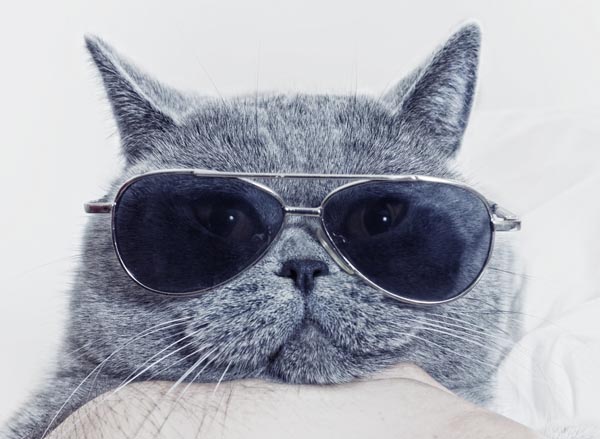Recognizing Pain in Cats
The one thing that all pet owners wish is that their pets could talk and tell them what is wrong when they are not feeling well. Cats, like dogs, do show behavioral signs that can indicate that they may be in pain, below are some of the most common:
1. Agression
Some cats are aggressive naturally and this can make it hard to tell if their aggression is escalating. But a normally docile cat who suddenly becomes aggressive can be sign of pain.
2. Change in Activity Level
Becoming less active and sleeping longer than normal can indicate discomfort. Arthritic cats may be reluctant to change positions or jump onto high places. Also cats may become more active: restless, repetitively getting up and down, and trouble getting comfortable.
3. Change is Routine
A cat whose appetite suddenly drops may be feeling too much pain to eat, or may be experiencing nausea . An abrupt onset of soiling in the house after years of using the litterbox may be too painful to get in and out of a box with high sides. A lap cat who suddenly can’t stand being held may be experiencing pain when they are touched or petted.
4. Facial Expression
A vacant stare at nothing in particular, or a “glazed” expression is common. Cats in distress can also have dilated pupils—part of the stress response in the body. Unlike in dogs, cats do not normally pant. If you notice a panting cat, particularly when she is at rest,is considered an emergency and you should get her to the vet immediately.
5. Poor Coat Condition
Pain from arthritis can make it difficult to contort themselves into their normal grooming positions, and pain in general can make a cat too uncomfortable to maintain their normal routine. A cat who stops grooming and starts to look unkempt may be in pain and needs to be evaluated.
6. Posture
When cats are stiff they walk very gingerly and avoid the usual athletic leaps. Cats with abdominal pain may have a hunched back, tucking in their abdomen in a protective posture. You may also notice a cat being protective of a certain area of their body, not wanting to be touched or scratched; they may also limp or hesitate to put weight on a sore limb.
7. Self Mutilation
People associate biting and licking with allergies, pets in pain often repetitively lick and bite at painful areas. They may do it so often that they cause secondary trauma to their body in the form of skin infections and hair loss.
8. Vocalizing
We know that a hissing or growling cat is unhappy, but meows and purrs can accompany pain as well. Some cats purr when they are frightened or hurting, and it does not always indicate contentment. This is particularly true for cats with an easygoing or gentle personality.
NEVER EVER try to treat a cat with human medications. Doing so can be deadly. If you believe your cat is experience pain, make an appointment to discuss with your veterinarian.
[/PetMD]

